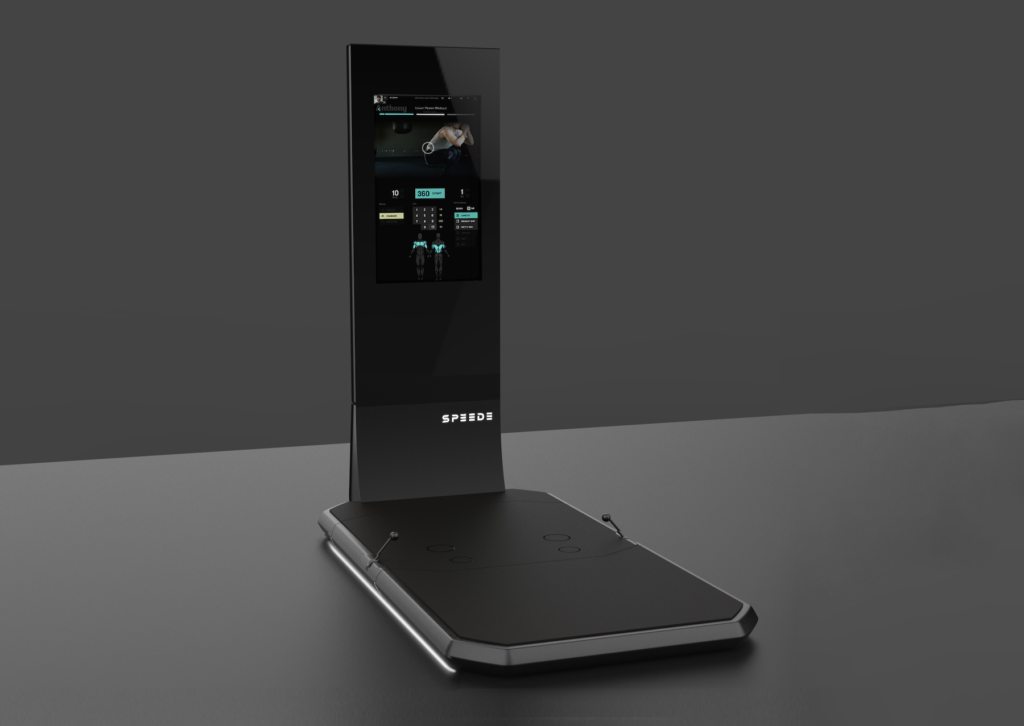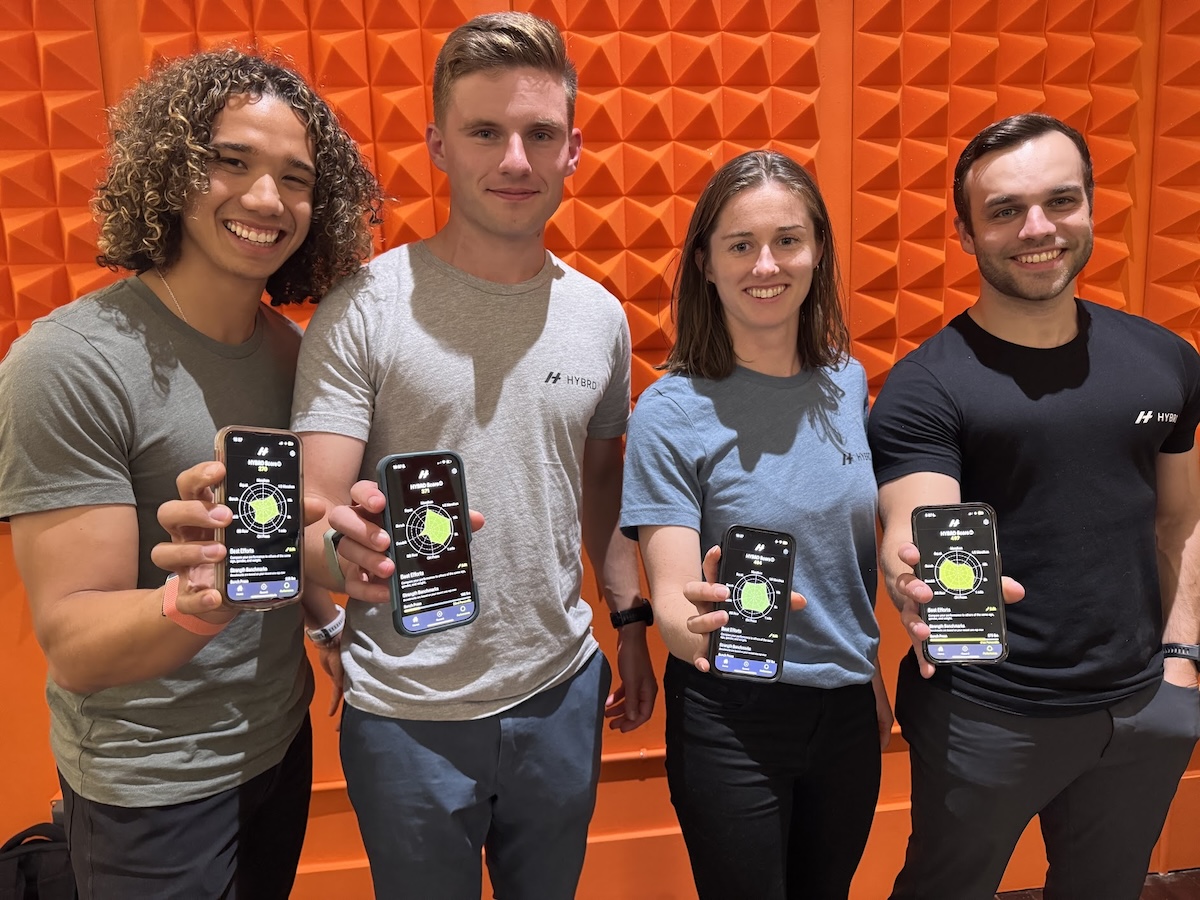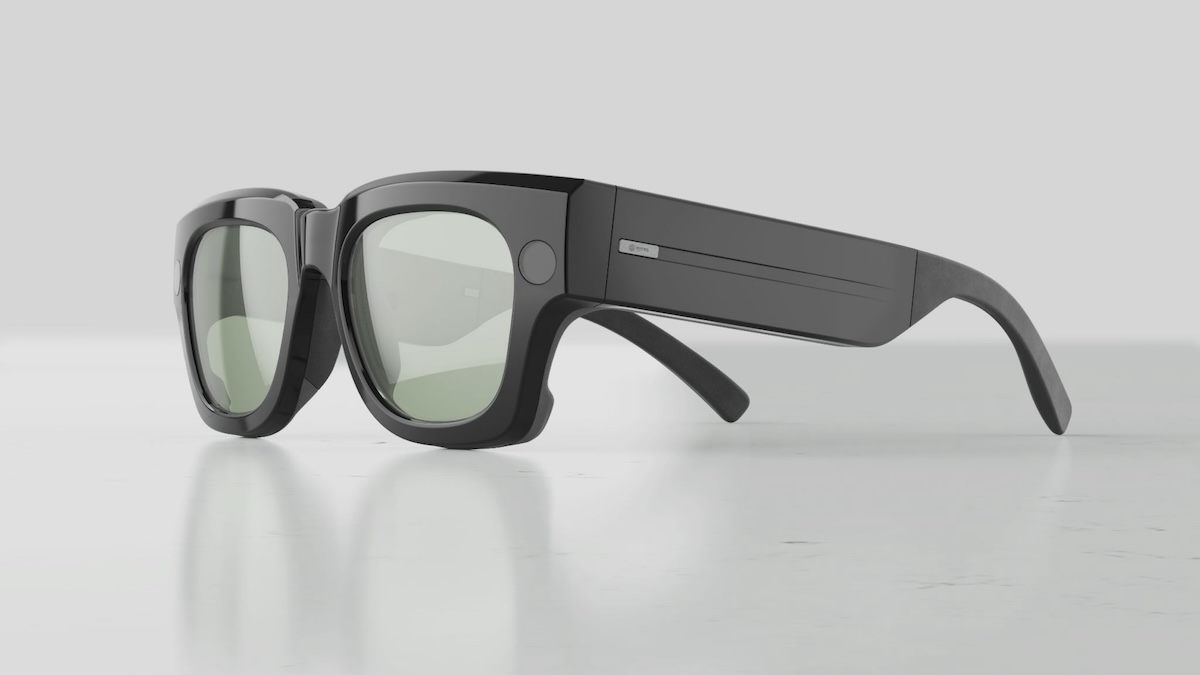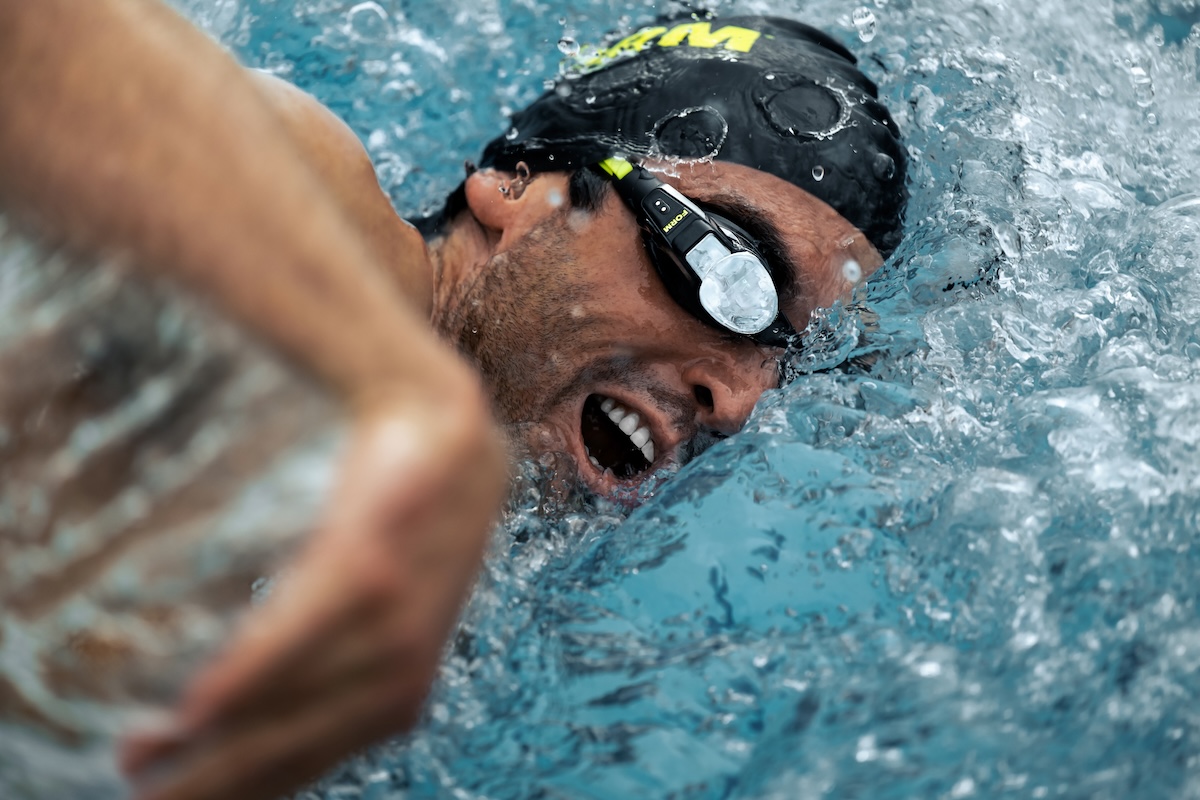Startup Q&A is an interview series showcasing health, fitness, and wellness companies.
In this Q&A, you’ll hear from Dan Mooney, co-founder of Speede Fitness, maker of a connected strength machine designed for athletes. Dan discusses going from an injury-prone college athlete to partnering with aerospace engineers to create the first smart strength equipment to focus on isokinetic training.
Can you tell us about what you’re working on at Speede Fitness?
Dan Mooney: At Speede, we leverage technology and science to create the most efficient strength training workouts ever.
With our new machine, the Speede Challenger, we use what’s called isokinetic training. With isokinetic movements, the speed of the motion is always kept the same but the resistance alters.
So, with Speede, there is no longer a “sticking point” like you face in traditional strength training — our technology will apply perfect opposing resistance through the entire range of the exercise, automatically matching the force you produce. This allows for much more specific strength training sessions and leads to quicker results.
Our machine also allows for maximal eccentric training. During the eccentric phase of a movement, the muscles can handle up to 40–50% more load, but that becomes very challenging to do in traditional settings.
Think about doing a traditional bicep curl with a dumbbell: Your muscles are only under tension for a tiny fraction of the time, and when you’re lowering the weight (the “eccentric” part of the movement), you often just let the weight fall rather than controlling it.
In contrast, Speede provides that resistance at a constant speed and continues to challenge you during that eccentric portion when your muscles are actually at their strongest — allowing you to utilize maximal eccentric training in a safe, effective, and efficient manner.
Why are eccentrics so important? Studies have shown that eccentric training can improve muscle mass, muscle power, flexibility, tendon strength, bone density, and metabolic rate. Simply put, this is the machine that athletes, trainers, and therapists have been waiting for. You can do workouts with Speede that just aren’t possible with any other existing solution.
How did you come up with the idea? What key insight led you to pursue this opportunity?
DM: It stems back to me being an athlete. I always tell people that I didn’t invent isokinetic or eccentric movements — I was just blessed to be introduced to several different training programs and modalities throughout my playing career and during my time as a personal trainer.
So, when I was a college baseball player, I had dreams of pitching at the professional level. I had a phenomenal agent and I was throwing in the mid- to upper-90s, so that goal seemed well within reach. Then, I suffered a series of injuries that I just couldn’t recover from.
I went all across the country trying to find the right treatment, but nothing could get me over the hump. I was still working out for teams despite the injuries, but I recognized that unless I was healthy, I wasn’t going to have a chance.
So, I decided to come back home to the Chicago area and start working as a personal trainer. At that time, I started working out and learning under John McNulty (now our director of education). John had been using eccentric training extensively in his program, and I began implementing it frequently with myself and then with my clients.
It was only then that I finally began to walk pain-free for the first time in years. I started doing some more research and thought back to my days using different devices out there. I realized that no one was offering a technology-driven platform that offered full-body resistance training.
And, more importantly, no one was offering a safe, cost-effective way to perform eccentric training. With that, the idea of Speede was born.
We say that our machine is built for athletes but made for everyone. Because we know everyone at every age can benefit from strength training.
How did you turn your idea into a company?
DM: I had this vision for what I wanted to build, but I was just a young guy with an entrepreneurial spirit. I was blessed to get introduced to my co-founder, Greg Tepas, in September 2020. Greg is an entrepreneur, early-stage investor, and has been the CEO of several companies.
He saw the opportunity to bring this idea to the market as a connected fitness device, and we’ve been partners ever since.
The other major milestone was teaming up with the brilliant group of former aerospace engineers at Hatch Product Development. They’ve led the design and engineering process and have really done the impossible with this machine.
We’ve also been able to team up with Mohammed Iqbal and his team at SweatWorks.
In working with Hatch and SweatWorks, we have no doubt we will provide the best resistance training machine on the market.
Along the way, we’ve also built our marketing team and brought on other advisors, investors, and athlete partners. Every person has brought new ideas that have helped strengthen our product and our brand.
It also helps that anytime anyone tries our machine, they are absolutely blown away because they’ve never tried anything like it.
Having a guy like Greg as a co-founder has made raising capital pretty smooth, too. This is not his first rodeo, and he is very well respected due to his past success. We oversubscribed on our seed round and have others looking to come in on a note.
How big can this get? What’s the addressable market and how do you go about capturing it?
DM: At Speede, we are poised to take advantage of the rapid growth of the global fitness industry. According to Business Wire, the global market for connected gym equipment was estimated at over $255M in the year 2020 and is projected to hit $1.5B by 2027.
In that time period, cardiovascular training equipment is projected to record a 29.7% CAGR and reach $913.5M. And the strength training equipment segment is expected to see 26.9% CAGR during that time.
The beauty for us is that because our technology is proven to help in both performance and rehabilitation, we have the ability to penetrate both B2C and B2B markets, including physical therapy clinics, professional sports organizations, colleges and universities, high schools, sports acadamies, and over 10K gyms and fitness studios.
We plan to capture the market with a combination of an internal sales team, distributors, and marketing, including athlete influencers who are actual “power users” of our product. We are also building out a Speede Science team of professional strength & conditioning coaches, physical therapists, occupational therapists, chiropractors, and other professionals to help get the word out in the B2B space.
Who is the core customer? How are you acquiring customers? And how will you grow the customer base?
DM: On the B2B side, our core customers are athletes, strength & conditioning coaches, personal trainers, and physical/occupational therapists.
We see the Speede Challenger becoming a must-have in team weight rooms at the high school, college, and professional levels. It’s also useful for trainers and therapists to help their clients and patients to build strength faster and recover from injuries. We are targeting these markets first while also preparing for a consumer launch.
On the consumer side, we are initially targeting busy executives and others who are short on time, along with fitness enthusiasts who are looking for the ultimate strength training machine.
Looking at your road map, what are some of the milestones you’re targeting over the next 3-6 months?
DM: Our initial launch will take place in June 2022. We plan to be at the National Basketball Strength & Conditioning Vendor Show alongside the pre-draft combine in Chicago, then we will head to IHRSA, the major convention for health & fitness professionals.
Until then, we are beginning to gather pre-orders and are already engaged in conversations with large fitness chains, physical therapy centers, and others in the industry. We plan to lock some of those deals in place ahead of launch so they can receive the first batch of machines.
Teaming up with Mohammed and SweatWorks will allow us to implement computer vision and motion capture into the machine itself. After we launch in June, our group of science experts will begin working with their team to finalize the wealth of data analytics that we want to capture.
Anything else you’d like to share with readers?
DM: We saw a flaw with a lot of connected fitness devices out there. They weren’t built for athletes, and the athlete in me set out on a mission to change that.
First and foremost, Speede is “Built for Athletes,” and athletes absolutely love the Speede Challenger. Our Speede Pro Athlete partners include: Michael Chandler, UFC fighter; NFL players Justin Fields, Cole Kmet, Justin Simmons, Jaylon Johnson, and Marquez Valdes-Scantling; and NBA player Mason Plumlee.
We also have teamed with Ed Mylett, who is the fastest-growing business personality in the history of social media. We have a growing group of fans on the professional level, but we also want to change this for people that are busy and want to train more efficiently and more effectively.
We can’t wait to see what the future holds.
If you’re interested in having your company featured in our Startup Q&A series, send an email to team@fitt.co.
Related reading from Fitt Insider:
Issue No. 150: The Connected Fitness Update
Issue No. 125: Smart Strength
Fitt Insider Podcast #120: Mohammed Iqbal, founder of SweatWorks




